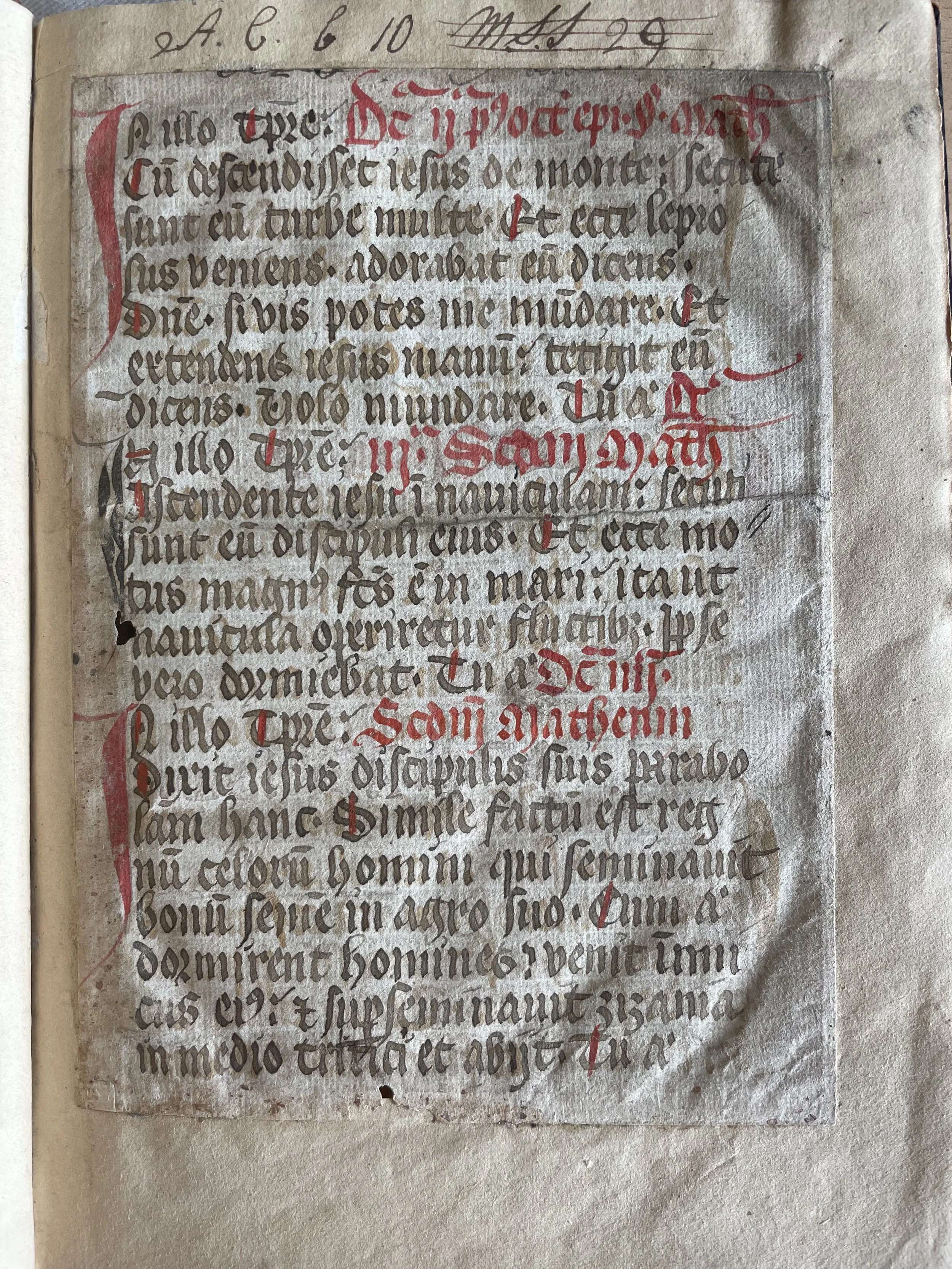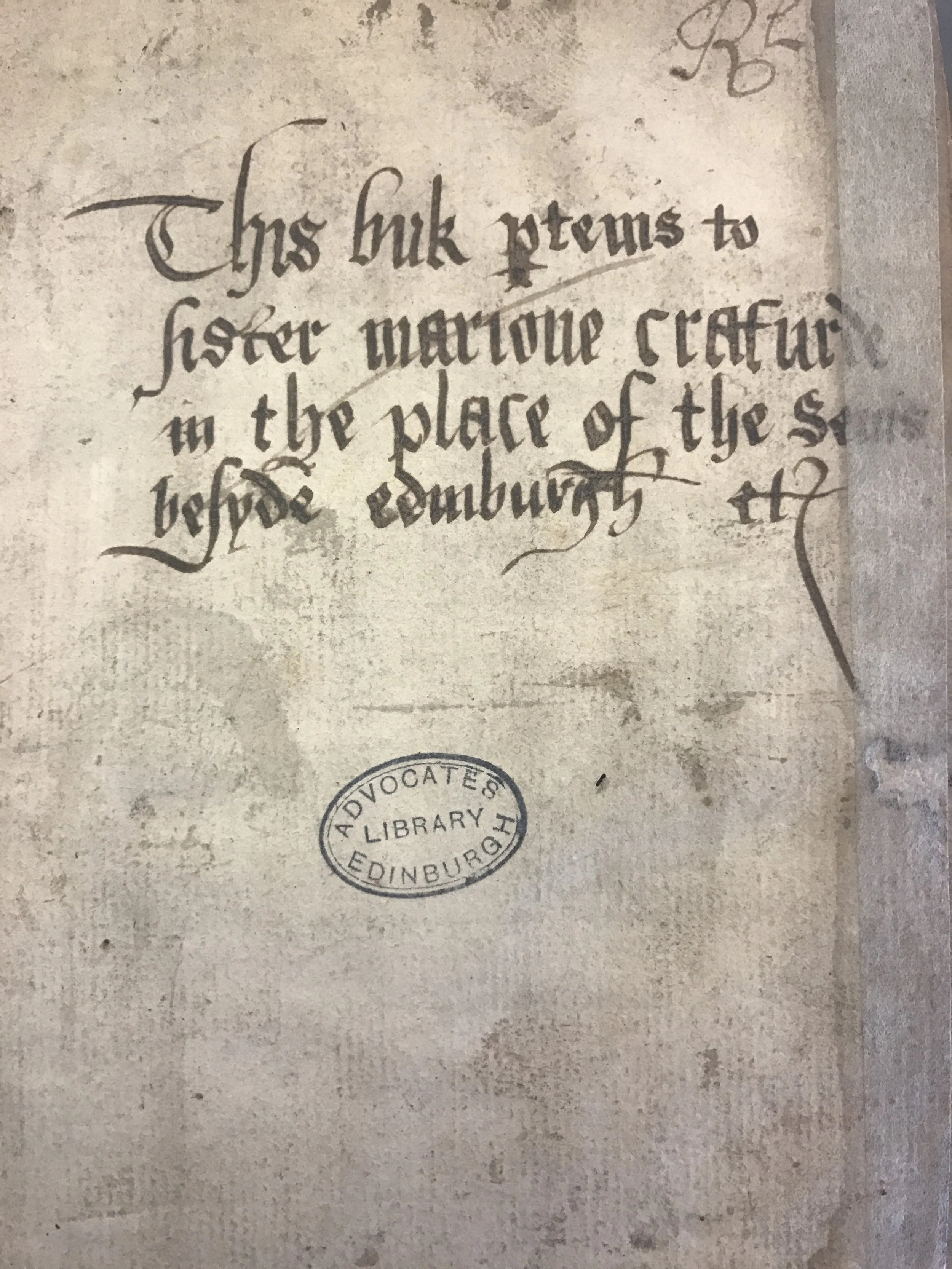Uncovering Religious Women’s Book History in Medieval Scotland
All images were taken by and belong to Katherine Holderith.
The purpose of this research is to expand the understanding of religious women’s literacy, book use, and scribal ability during the medieval period in Scotland in order to challenge the current negative notions of such in the field of women’s book history. The research was originally divided into three sections. The introduction material addressed the problems faced when examining nun scribes in Scotland specifically. The first section analyzed the various levels of literacy within medieval Scotland, the opportunities for education, and subsequent effects on the populations of female monastic houses. The second section examined at the varying degrees of interaction female houses had with books and other forms of written material. The third section explored evidence of female writing and any form of scribal work, which as compared to the continent is very scarce in the British Isles. This research draws from scholars who have opened up this narrow field to further inquires, such as Kimm Curran, Marylin Oliva, Veronica O’Mara and Audrey-Beth Fitch, as well as looking at some early foundational work, such as essays by Diane Watt and Eileen Powers’ Medieval English Nunneries. The scope of the research at the time did not allow for a truly thorough exploration of all known nuns, their work and books, but hopefully it has provided some clarity on the book-related activities of the female religious during the late medieval period in Scotland.
Compared to over 200 books that can be positively identified as formerly belonging to English nunneries, there are just four books extant in Scotland identified as once belonging to a female religious.
Determining literacy rates in Scotland during the pre-Reformation period, as it relates to either lay or religious populations, is an elusive task challenged by flexible definitions of literacy and insufficient evidence concerning the majority of the population. The literacy of an individual within Scotland is more often easier to ascertain, but such is usually reserved for members of the upper tiers of society. Evidence determining the literacy of women, particularly that of female religious populations, in Scotland is practically nonexistent. However, using methods of comparison with populations in places like England, as well as analyzing the slim amount of evidence we do possess, a rough notion of the literacy of female religious in Scotland can be determined.
Scribal activity, or indeed any form of writing, by female religious in medieval Scotland has never been fully explored. This is because in Scotland evidence of nuns’ writing — of any kind — is supposedly nonexistent: there are no major manuscript works attributed to female religious, nor does any significant correspondence survive. Any account books, cartularies, or internal records keeping have mostly been destroyed and the literacy levels of women during the medieval period support the assumption that the female religious in Scotland were plainly not capable of writing. Thus, a superficial scholarly scan would suggest there is no evidence to work with. However, as with everything regarding nuns in medieval Scotland, a deeper investigation exposes contradictions to surface assumptions. Analysis of the available evidence of female religious in Scotland reveals their scribal competence, in whatever a limited capacity, and can be used to provide a basis for further writing abilities.


